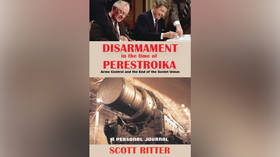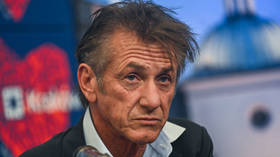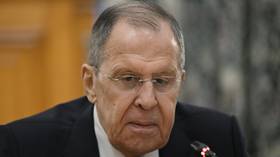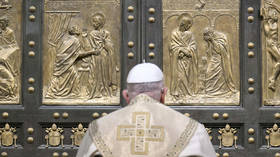Zelensky, 2022, Stalin 1942: The US propaganda machine can easily make heroes, but it can quickly change the script
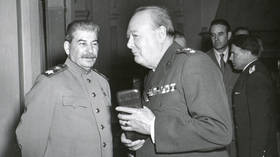
America’s sudden love affair with Ukrainian President Vladimir Zelensky and Kiev’s military forces is reminiscent of an old campaign to exalt a previous ally of geopolitical circumstance: Soviet dictator Joseph Stalin.
Just as in the Georgian strongman's heyday, the US political establishment and media-entertainment complex have responded to a crisis in Eastern Europe by portraying their preferred combatants as heroic friends who must be supported. In fact, Zelensky and his country’s defenders have been painted as freedom fighters battling to save democracy from evil aggressors – even as Kiev bans opposition parties, shuts down media outlets, and otherwise silences critics of the regime.
For instance, outlets such as Newsweek and the Associated Press have touted Zelensky as a “defiant hero” and a “modern Churchill.” The comparison to former UK Prime Minister Winston Churchill wasn’t sufficiently glowing for CNN, which said Zelensky is a “more unlikely hero.”
After all, the liberal network argued, Churchill was “an imperialist rather than a pure believer in democracy.” Zelensky, despite taking such actions as arresting the main opposition party's leader and banning critical TV and online outlets, apparently qualifies as a greater democrat than a man who lost office, by the ballot box, shortly after his greatest victory.
Eight decades ago, Churchill and US President Franklin Roosevelt faced a similar challenge in trying to beautify the Western public image of Stalin, a hated enemy before Nazi leader Adolf Hitler broke a non-aggression pact by attacking the Soviet Union. As American historian Albert Marrin wrote in ‘A Time of Fear’, his 2021 book on the red scares before and after World War II, there was considerable public concern “over fighting one mass murderer with the help of another.” The joke back then was that the main difference between Stalin and Hitler was the size of their mustaches. “Otherwise, they were the same cold-blooded monsters,” Marrin said.
But the Allied powers deemed support for the Soviets advantageous to keep Axis forces deployed on the Eastern Front, where 90% of German casualties would be suffered, taking much of the heat off their own armies. The White House used its new Office of War Information (OWI) propaganda unit to burnish the Soviet regime’s image while providing $11.3 billion in wartime aid to the USSR, equivalent to nearly $190 billion in today’s dollars.
As in the current conflict, media outlets did much of the heavy lifting. Stalin was depicted as “Uncle Joe,” a trusted ally and brave leader. He appeared on the covers of major magazines, including three times on Time, which named the Georgian generalissimo its “Man of the Year” in January 1943.
Later that same year, Collier’s magazine did a cover story making the dubious claim that the USSR was evolving “toward something resembling our own and Great Britain’s democracy.” This was a half decade after the Great Purge, when Stalin wiped out somewhere in the region of a million people during an attempt to eliminate perceived political threats.
The New York Times agreed, asserting in 1944 that “Marxian thinking in Soviet Russia is out. The capitalist system, better described as the competitive system, is back.”
Life magazine promoted the Soviet leadership present and past, including calling Vladimir Lenin “a normal, well-balanced man who was dedicated to rescuing 140 million people from a brutal and incompetent tyranny.” That was strangely high praise, given that the US government didn’t recognize the USSR until nearly a decade after Lenin’s death. Life also praised Soviet citizens, calling them “one hell of a people” who “look like Americans, dress like Americans and think like Americans.”
Stalin’s brutal secret police, the NKVD, were described as “national police similar to the FBI,” whose job was “tracking traitors.” Life added, “If Soviet leaders tell us anything, we can afford to take their word for it.”
The OWI also made efforts to promote the Soviet Red Army. A 1942 propaganda poster showing a smiling, apparently Russian, soldier was captioned, “This man is your friend. He fights for freedom.”
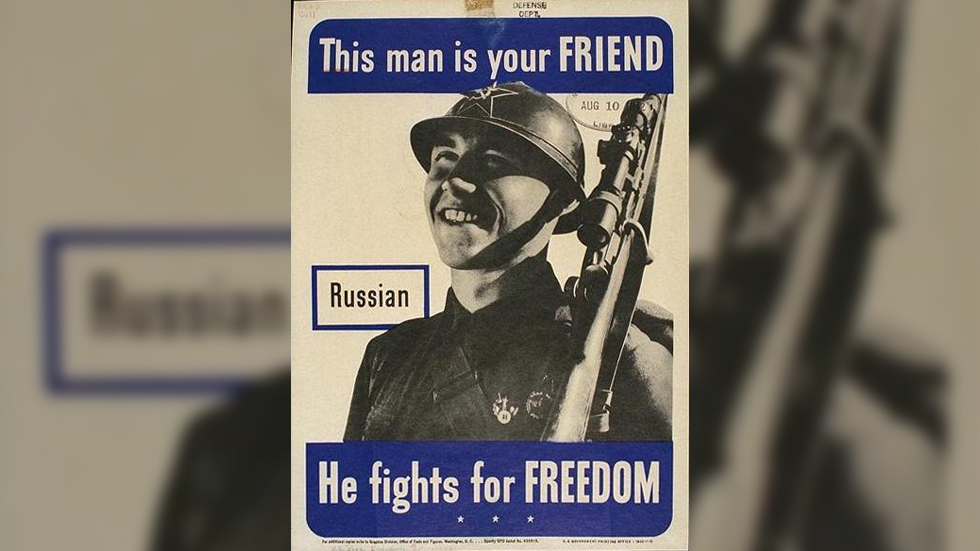
Fast-forward to today, and praise for Ukraine’s military is similarly effusive. The Pentagon, for example, has been so impressed by Kiev’s forces that its leaders have suggested their exploits will be studied by future generations of soldiers. Ukraine’s fighters “will go down in military history” for their resilience in battling the Russian military, US Secretary of Defense Lloyd Austin said in April.
Even in defeat, such as Russia’s capture of Severodonetsk last month, the Pentagon has hailed the fighting prowess of Ukraine’s personnel. An unidentified US official has been quoted as saying that when Ukrainian forces retreated, “they chose to do [it] of their own accord.”
However, the current portrait of Ukrainian forces has required major airbrushing of neo-Nazi elements, which establishment media outlets covered more openly before Russia launched its military offensive in February. As Reuters pointed out in 2018, dozens of volunteer militias in Ukraine use Nazi symbolism and recruit Hitler acolytes into their ranks.
Those groups have attacked anti-fascist demonstrations, government meetings, media outlets, foreign students and minorities, among other targets, Reuters noted. Some 40 US senators signed a letter in 2019 demanding that some of those militias, including the Azov Battalion, be designated as terrorist organizations.
But with Ukraine now a media darling, to the extent that major outlets acknowledge the country’s fascist elements, it’s typically to whitewash them. For instance, NBC News argued in March that because Zelensky has Jewish heritage and there have been no “recent mass killings or ethnic purges” in Kiev, it’s “absurd” for Russian President Vladimir Putin to claim that Moscow’s military offensive is partly designed to “denazify” the former Soviet republic.
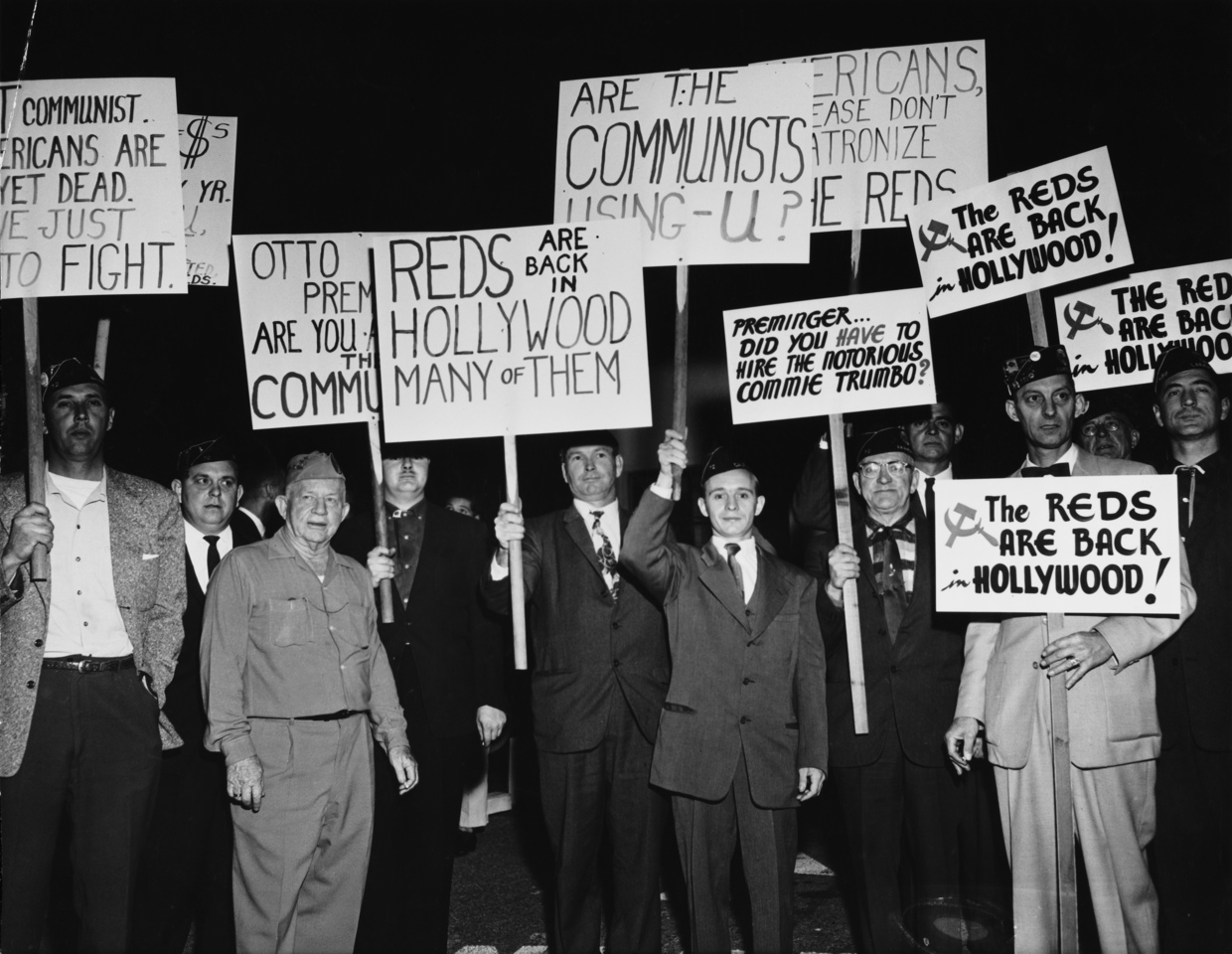
Likewise, President Joe Biden and other US leaders have mocked the notion that Ukraine has a Nazi problem, typically citing Zelensky’s Jewishness as their proof. “Putin has the gall to say he is denazifying Ukraine,” Biden said in March. “This lie isn’t just cynical, it’s obscene.”
However, the fact is Ukraine incorporated neo-nazi militias, including the Azov Battalion, into its National Guard after the country’s democratically elected leadership was overthrown in a US-backed coup in 2014. Those fighters have been hailed for their alleged heroism in battling Russian forces, and Western outlets have amplified Azov propaganda, such as a falsely claimed chemical weapon attack in Mariupol. In fact, immediately after the Russian offensive began, Facebook altered its rules to allow users to praise the Neo-Nazis.
The new wave of apologism for openly fascist elements – Ukraine has statues, street names and public marches venerating WWII-era Nazi collaborators – follows years of US political rhetoric hyping fears of neo-Nazism. Democrats in Congress, including Representatives James Clyburn (South Carolina) and Jerry Nadler (New York), likened then-President Donald Trump to Hitler.
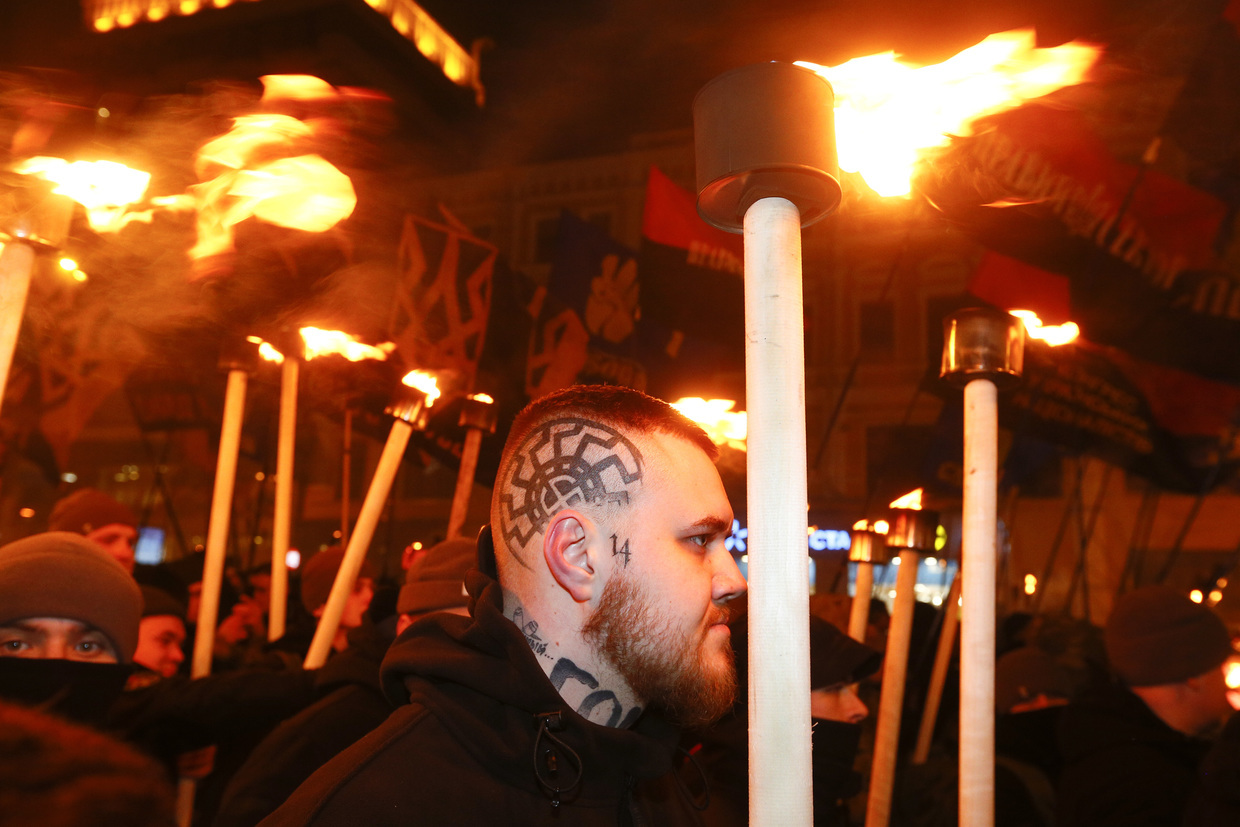
Prior to the current crisis, Americans knew little about Ukraine, which consistently ranked as one of the poorest and most corrupt nations in Europe. When Ukraine became a big news story during the 2014 coup, the Washington Post found that only one in six Americans were able to find the country on a map. The median guess was 1,800 miles off.
Nevertheless, once Russian tanks rolled across the border, Americans were quick to accept the new narrative about Zelensky and Ukraine. A Pew Research Center poll found that 72% of Americans had confidence in Zelensky to “do the right thing in world affairs.” In fact, the Ukrainian president ranked ahead of all other world leaders in the survey, including Biden at 48%.
Selling the public on Zelensky and Ukraine has been vital, given that the deeply indebted US government is pumping tens of billions of dollars’ worth of aid into Kiev and leading the charge for anti-Russia sanctions, which have contributed to the nation’s highest inflation rates in more than 40 years. And if warnings from Russian leaders are to be believed, the campaign to supply weapons to Ukraine and punish Moscow has put Americans and the rest of humanity at risk of potential nuclear annihilation.
With the stakes so high, critics of Biden’s Ukraine policy have been branded as Russian stooges or traitors. The New York Times and USA Today, among other outlets, have dismissed opposition as “far-right” rhetoric. Such voices have repeated the Kremlin’s “misleading claims” about the war, The Times said, including “unfounded” allegations about US-funded biolabs in Ukraine.
Rolling Stone called Fox News host and Biden critic Tucker Carlson a “Putin sycophant,” while MSNBC suggested that he was echoing Moscow's talking points because he wanted the US to become more like Russia, “with paleoconservative and white nationalist principles.”
Hollywood was quick to jump on the “Stand With Ukraine” bandwagon. Actors Ben Stiller and Sean Penn went so far as to pay visits to Zelensky in Kiev, with the former telling the Ukrainian president, “You’re my hero.” Penn threatened in March to boycott the Academy Awards show and smelt his two Oscars if organizers didn’t invite Zelensky to participate in the event.
As it turned out, Zelensky didn’t get to make a remote appearance, but the Los Angeles awards program featured a moment of silence for Ukraine and an appeal for public donations. The Ukrainian president did give a recorded speech at the Grammy Awards in April.
Zelensky had no reason to doubt the entertainment industry’s support. He told Ukrainians in a March speech, “The whole world admires you, from Hollywood stars to politicians.”
Several major studios announced in March that to show their support for Ukraine, they were halting the release of their films in Russia. In the UK, the opening of a blockbuster Guy Ritchie movie called ‘Operation Fortune’ has reportedly been delayed because it needed to be revised to reflect newfound reverence for Kiev. It turns out that gangsters in the story were identified as Ukrainian, which is no longer acceptable.
Hollywood was also a key pillar in the campaign to sell Americans on Stalin and the Soviets. Studios rushed to produce pro-Soviet films – such as ‘The Boy from Stalingrad’, ‘Song of Russia’, and ‘Moscow Strikes Back’ – in many cases getting OWI approval for their scripts. In ‘Days of Glory’, starring Gregory Peck as “Vladimir,” Soviet guerilla fighters were portrayed as defenders of democracy. ‘The Battle of Russia’ featured ordinary citizens depicted as patriots devoted to their leaders, a theme that was too far-fetched even for Stalin, who once admitted that the Soviet people “fought for their homeland, not for us.”
Roosevelt requested the making of a movie called ‘Mission to Moscow’, which was based on a book by a former US ambassador to the Soviet Union, Joseph Davies. The film portrayed Stalin as a kindly and wise leader with a fondness for children. It sanitized the Moscow show trials of 1936-1938 – which Stalin used to purge his political enemies – depicting them as a necessary step to expose traitors. Speaking to an audience that watched the movie in Chicago, Davies reportedly said, “The word of honor of the Soviet government is as safe as the Bible.”
Ukrainian-born Soviet engineer Victor Kravchenko, who was assigned to Washington under the lend-lease program and later defected, cringed when he heard such gullibility as he traveled around America during the war. In his 1946 book, ‘I Chose Freedom’, Kravchenko recalled: “A thousand times, I had to listen in frustrated silence while the Soviet dictatorship was given full credit for the achievements of the Russian people. Stalin’s grip on the American mind, I realized with a shock, was almost as firm as his grip on the Russian mind.”
Once the war ended, it was no longer necessary to promote Uncle Joe and the Red Army. The temporary allies were quickly estranged once Hitler was vanquished. With a congressional committee hunting down alleged communists as traitors and Hollywood facing pressure to prove its patriotic loyalty, Soviet-related films had a decidedly darker tone, as evidenced by such titles as ‘The Red Menace’ and ‘Behind the Iron Curtain’.
A US poll conducted in March 1946, just 10 months after the war in Europe ended, showed that 60% of Americans believed their government was too soft on policy toward the USSR, while only 3% said it was too tough. By a 65%-25% margin, respondents believed the Soviets would go to war to get what they wanted. Later that same year, a poll showed that 62% of Americans said their feelings had become less friendly toward the Soviet Union, compared with only 2% who said they felt more friendly.
The US-Ukraine relationship remains chummy, though it’s perhaps no longer in a honeymoon phase. Some observers questioned whether the ties were beginning to fray last month, when Biden said Zelensky “didn’t want to hear” Washington’s warnings early this year that the Russians were poised to launch an attack. Ukrainian officials called the claim “absurd.” Biden critics, such as Fox Business host Charles Payne and podcast host Jack Posobiec, said Zelensky was being thrown “under the bus.”
With the economic effects of the conflict multiplying on the home front, US public support for Ukraine aid has begun to wane. Polling by research firm Morning Consult earlier this month showed that 81% of Americans remained at least “somewhat” concerned about the Russian offensive in Ukraine, down from 90% in March. Less than half of respondents (46%) said their government should impose sanctions on Russian oil, even if that causes fuel prices to rise, down from 55% in April. Only 43% of US voters, including 32% of Republicans, see the protection of Ukraine as America’s responsibility, down from 50% in April.
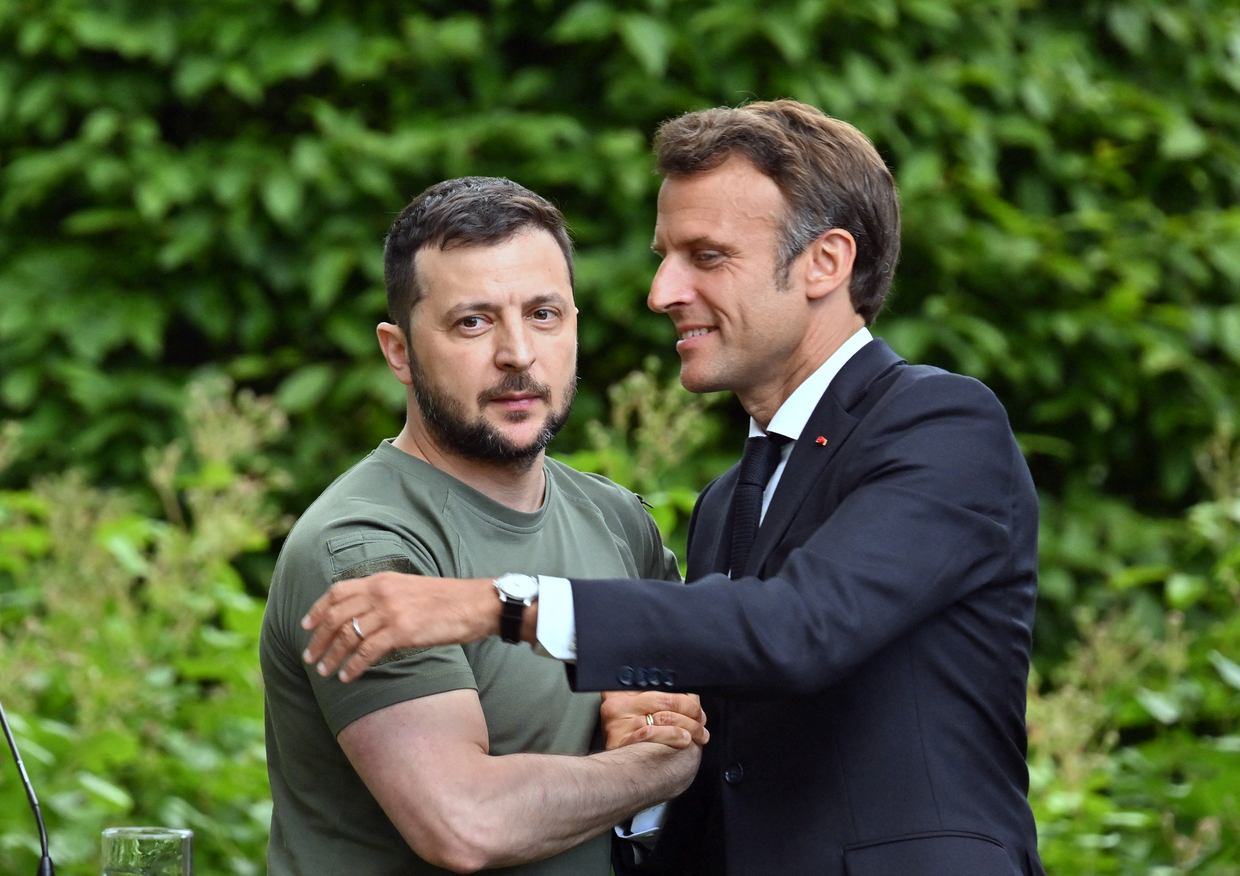
Nevertheless, Biden’s administration is making plans to keep shipping weapons to Ukraine for “months and years,” a Pentagon official told reporters last week. US Secretary of State Antony Blinken reiterated late last month that the administration was committed to backing Kiev for the long haul. “We are giving Ukraine the support it needs to defend itself for as long as it takes, and we will continue to do so,” he said.
Back in May, Blinken linked America’s heroic allies past and present: “Those who study the past know President Zelensky and the brave people of Ukraine embody the spirit of those who prevailed during the second World War.”
The statements, views and opinions expressed in this column are solely those of the author and do not necessarily represent those of RT.

